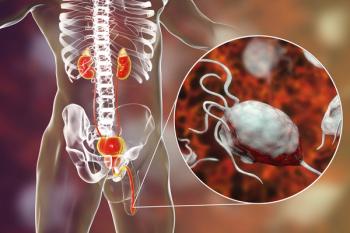
How Does One Manage Talquetamab’s Unique AE Profile in Multiple Myeloma?
Unique toxicities presented with talquetamab tend to get progressively better as the treatment course continues, according to Prerna Mewawalla, MD.
Although talquetamab (Talvey), a GPRC5D-directed therapy, has unique adverse effects (AEs) that may impact the treatment course for those receiving care for multiple myeloma, these toxicities are typically most prevalent in the first few cycles of treatment.
CancerNetwork® hosted a panel discussion encompassing emergent toxicities and access to CAR T-cell therapy and bispecifics prior to the 2025 Immune Cell Effector Therapy (ICE-T) Congress. The panel included Prerna Mewawalla, MD, director of apheresis in the Division of Hematology and Cellular Therapy at Allegheny Health Network and associate professor at Drexel University College of Medicine; Shebli Atrash, MD, medical oncologist at Atrium Health Levine Cancer Institute and clinical associate professor at Wake Forest University; and Jeries N.J. Kort, MD, assistant professor of hematologic malignancies and cellular therapeutics at Kansas University Medical Center.
Mewawalla began by describing what she tells patients regarding talquetamab’s unique AE profile, emphasizing that these toxicities typically appear early in the treatment course, and that preparation can help for skin and nail toxicities. She further expressed that her team provides patients with moisturizing cream, with a steroid cream as a next step for at-home treatment of these toxicities, while prompting patients to call into her clinic if symptoms worsen. She concluded by stating that despite attempting numerous remedies for dysgeusia, dose reductions seem to be the most effective strategy for mitigating this AE.
Next, Kort concurred and explained that his practices will modify the dose intensity and frequency to manage AEs, suggesting that the presence of AEs may indicate an efficacy with talquetamab due to an “on-target, off-tumor” effect. Finally, Atrash added that supportive care for talquetamab largely helps manage emergent AEs, but that more must be done to overcome this challenge.
Transcript:
Mewawalla: I always tell patients that talquetamab has unique toxicities that we do not see with other [agents]. I also start by saying that it is generally worse in the first few cycles, and then it does get better. If they are prepared and know what is coming, it does make it a lot better, especially with the skin changes and the nail changes. Even with the nail changes, I always tell them that they will see [them], but once the new nail comes out, it is going to be fine. It is for the first few cycles, which I think is reassuring to patients. I also tell them upfront that you should have Aquaphor moisturizing cream already available at home, and then the next step is a steroid cream. If it does get worse—if that's not enough—call us right away.
When it comes to the dysquesia, unfortunately, we [have tried things] like lemon drops, zinc, and dexamethasone rinses, but the thing that helps the most is cutting back on the talquetamab a bit. I do not [believe] I have ever had to discontinue anyone from the drug for it because that is also something which gets better. Decreasing the dose has helped more than any of these other things that I have done in practice, even though we implement all of them as well.
Kort: Yeah, I totally agree. We try all these measures, but I think decreasing the dose or decreasing the frequency of giving the drug helps [greatly] with the toxicity, and that has been replicated many times as well. The other thing that I also try is to educate my patients on data that suggests those who have that toxicity seems to be more responsive to the treatment because of an “on-target, off-tumor” effect. It might be a sign that the treatment is working. Again, most of the time by decreasing the dose [or] frequency, they can tolerate it better, and they can go through it.
Atrash: I do not have much to add here. I agree with what my colleagues said. Supportive care goes a long way, but for talquetamab, it is a challenge, and we need to improve that.
Newsletter
Stay up to date on recent advances in the multidisciplinary approach to cancer.






















































































